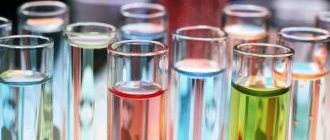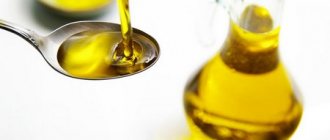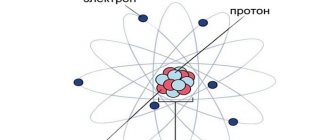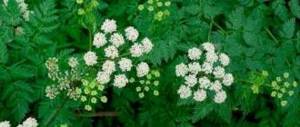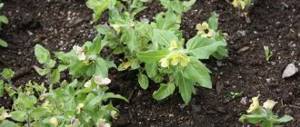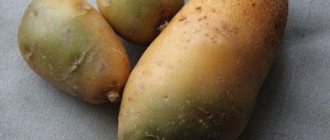This term has other meanings, see Mustard gas (meanings).
| Mustard gas | |
| Are common | |
| Systematic name | Mustard gas, mustard gas, b-dichlorodiethyl sulfide, 2,2′-dichlorodiethyl thioether, 2,2′-dichlorodiethyl sulfide, 1-chloro-2-(2′-chloroethylthio)-ethane |
| Abbreviations | B |
| Chem. formula | C4H8Cl2S |
| Physical properties | |
| State | liquid |
| Molar mass | 159 g/mol |
| Density | 1.280 g/cm3 (15 °C) |
| Thermal properties | |
| T. float. | 14.5 °C |
| T. kip. | 217 °C |
| Chemical properties | |
| Solubility in water | 0,05 % |
| Classification | |
| Reg. CAS number | 505-60-2 |
| PubChem | 10461 |
| Reg. EINECS number | 684-527-7 |
| SMILES | C(CCl)SCCCl |
| InChI | 1S/C4H8Cl2S/c5-1-3-7-4-2-6/h1-4H2 QKSKPIVNLNLAAV-UHFFFAOYSA-N |
| RTECS | WQ0900000 |
| ChEBI | 25434 |
| UN number | 2810 |
| ChemSpider | 21106142 |
| Safety | |
| LD50 | 0.7 mg/kg (human, orally). |
| Toxicity | extremely toxic, has a strong blister effect. |
| Data given is based on standard conditions (25 °C, 100 kPa) unless otherwise stated. | |
Mustard gas
(or
mustard gas
, synonyms: 2,2′-dichlorodiethyl thioether, 2,2′-dichlorodiethyl sulfide, 1-chloro-2-(2′-chloroethylthio)-ethane, “Lost”) is a chemical compound with the formula S(CH2CH2Cl) 2. A chemical warfare agent with blister action, according to the mechanism of action it is a cytotoxic agent, an alkylating agent.
Story
It was synthesized by Cesar Despres in 1822 and (independently) by British scientist Frederick Guthrie in 1860.[1]
Initially, the substance was given the name Lost - an abbreviation for the names of scientists Wilhelm Lommel and Wilhelm Steinkopf[en], who created a method for its production on an industrial scale for the German Imperial Army in 1916[2].
Mustard gas was first used by Germany on July 12, 1917 against Anglo-French troops, who were fired at by mines containing an oily liquid near the Belgian city of Ypres (where the name of this substance came from)[3].
In addition, mustard gas was used in the Italo-Ethiopian War of 1935-1936.
In December 1943, as a result of the bombing of the city of Bari by German aircraft, the American transport John Harvey, carrying mustard gas bombs, was sunk. As a result of the gas leak, a large number of American sailors and local residents were poisoned, some of them fatal[4].
Application
The first use of mustard gas by the Germans occurred during the war between the Quadruple Alliance and the Entente. In the literature, this armed conflict is often called chemical warfare, because during this period a terrifying amount of deadly toxic substances was tested and used.
The German military used mustard gas to stop the advance of the enemy army near the city of Ypres. On the night of July 13, 1917, the Germans attacked the Entente troops with mustard gas. The consequences of the first use of the toxic substance were terrible: about 2,500 people were injured, about 100 died on the spot. Many died after the military operation, since the effect of the deadly gas does not manifest itself immediately. After this attack by the Germans, the British, Americans, and French decided to adopt mustard gas too.
Thousands of dead, mutilated lives, bodies, faces of soldiers and civilians, land and water pollution are the consequences of the use of chemical weapons during the war. The civilized world could not allow such horror to happen again in the future. As a result, in 1925 the Geneva Protocol was signed banning the use of chemical weapons and bacteriological weapons in wartime.
Despite the ban, many countries still used chemical agents to corner their opponents and win the war.
Mussolini did not hesitate to use mustard gas in the Italian war against Ethiopia (1935-1936). The main goal was to unite the northern part of Africa under the flag of Italy, so brutal military methods were used, including chemical attacks. As a result, Italy annexed Ethiopia and united it with Eritrea and Italian Somalia into a new colony.
In 1943, a tragedy occurred, as a result of which not only the military, but also civilians of the port of Bari suffered. The German squadron bombed American ships, one of which was carrying shells filled with mustard gas. Despite the fact that the bombs being transported were without fuses, the air strike was enough to activate the toxic contents. There was a chemical attack that killed about 90 people.
The Japanese have surpassed everyone in testing and using chemical weapons on Chinese territory. In the early thirties of the 20th century, they purchased equipment from Germany for the production of poisonous gas on an industrial scale. The Japanese army built several chemical plants in the provinces of China. They tested toxic substances on prisoners of war and ordinary peasants! The soldiers of the Land of the Rising Sun considered the Chinese expendable. The Japanese army “did not spare” chemical weapons during the military operations in China (1937-1945). After the end of the Sino-Japanese War, the Japanese, getting rid of “evidence,” buried or drowned huge reserves of chemical weapons in reservoirs. In the 90s of the 20th century, there were cases when hastily disposed chemical shells were damaged, and ordinary citizens experienced the poisonous effects of mustard gas. In 2010, reports appeared in the press that a plant would be built in China to dispose of chemical weapons buried by the Japanese.
Receipt
Mustard gas is produced in three ways:
- From ethylene and sulfur chlorides, such as S2Cl2 or SCl2:
2 CH 2 = CH 2 + SC l 2 → ( CH 2 C l - CH 2 ) 2 S {\displaystyle {\mathsf {2CH_{2}{\text{=}}CH_{2}+SCl_{2}\ rightarrow (CH_{2}Cl{\text{-}}CH_{2})_{2}S}}}
- From thiodiglycol S(CH2CH2OH)2 and phosphorus trichloride PCl3:
3 ( HO - CH 2 - CH 2 ) 2 S + 2 PC l 3 → 3 ( CH 2 C l - CH 2 ) 2 S + 2 H 3 PO 3 {\displaystyle {\mathsf {3(HO{\text{ -}}CH_{2}{\text{-}}CH_{2})_{2}S+2PCl_{3}\rightarrow 3(CH_{2}Cl{\text{-}}CH_{2}) _{2}S+2H_{3}PO_{3}}}}
- From thiodiglycol and hydrochloric acid:
( HO - CH 2 - CH 2 ) 2 S + 2 HC l → ( CH 2 C l - CH 2 ) 2 S + 2 H 2 O {\displaystyle {\mathsf {(HO{\text{-}}CH_{ 2}{\text{-}}CH_{2})_{2}S+2HCl\rightarrow (CH_{2}Cl{\text{-}}CH_{2})_{2}S+2H_{2 }O}}}
Physical properties
Mustard gas is a colorless liquid with the smell of garlic or mustard. Technical mustard gas is a dark brown, almost black liquid with an unpleasant odor. Melting point is 14.5 °C, boiling point is 217 °C (with partial decomposition), density is 1.280 g/cm³ (at 15 °C).
Mustard gas dissolves easily in organic solvents - halogenated alkanes, benzene, chlorobenzene - just as well as in vegetable or animal fats; solubility in water is 0.05%. While the solubility in absolute ethanol above 16 °C is almost 100%, in 92% ethanol it barely reaches 25%.
Due to some surface activity, it reduces the surface tension of water and to a small extent spreads over it in a thin layer, like a film of oil. As a result of adding 1% high-molecular amine C22H38O2NH2, the spreading of mustard gas through water increases by 39%.
Mustard gas hydrolyzes very slowly with water; the rate of hydrolysis increases sharply in the presence of caustic alkalis, with heating and stirring.
Mustard gas reacts vigorously with chlorinating and oxidizing agents. Since this produces non-toxic products, the above reactions are used to degas it. With salts of heavy metals, mustard gas forms complex colored compounds; The detection of mustard gas is based on this property.
First aid
First of all, in order to avoid the toxic effect of mustard gas on humans, it is necessary to protect the skin, respiratory organs, and eyes with special means - a gas mask and a protective suit.
If drops of mustard gas get on the skin, it can be neutralized by applying a special substance from an individual anti-chemical package; if it is not available, then use an alcohol solution of chloramine. If your eyes are damaged, rinse them with running water or a weak soda solution. The penetration of mustard gas into the gastrointestinal tract is blocked by gastric lavage with a weak solution of potassium permanganate.
Chemical properties
At ordinary temperatures, mustard gas is a stable compound. When heated above 170 °C, it decomposes to form unpleasant-smelling, toxic products of various compositions. At temperatures above 500 °C, complete thermal decomposition occurs. Short-term heating even above 300 °C leads to almost no formation of decomposition products, therefore mustard gas is considered relatively resistant to detonation.
In relation to metals at ordinary temperatures, mustard gas is inert; it has almost no effect on lead, brass, zinc, steel, aluminum; When the temperature rises, the steel breaks down. Contaminated mustard gas, which usually contains water and hydrogen chloride, causes corrosion of steel. The resulting iron salts promote corrosion. Due to the gases released (hydrogen, hydrogen sulfide, ethylene and other decomposition products), an increase in pressure in closed containers, mines, bombs and transport containers must be taken into account.
Corrosion inhibitors and antioxidants prevent decomposition during storage. Such substances can be, for example, tetraalkylammonium halides, hexamethylenetetramine, pyridine, picoline, quinoline and other organic amino derivatives.
In the human body, mustard gas reacts with alkylation with NH groups of nucleotides that are part of DNA. This promotes the formation of cross-links between DNA strands, which makes this section of DNA inoperable.
Toxicokinetics
Mustard gases can penetrate the body, causing damage, in any way: inhalation (in the form of vapors and aerosols), through intact skin, wound and burn surfaces (in droplet-liquid form) and through the mouth with contaminated water and food. Contact with substances is not accompanied by unpleasant sensations (silent contact).
After entering the blood, the substances are quickly distributed in the body, easily overcoming histohematic barriers and penetrating into cells. Metabolism of substances occurs at high speed. Metabolism of substances is carried out with the participation of tissue microsomal enzymes. Since toxic intermediate products (sulfonium, ammonium cations, etc.) are formed during the metabolism of mustard gases, the induction of microsomal enzymes, induced experimentally by administering special agents (barbituric acid derivatives, etc.), is accompanied by an increase in their toxicity.
Varieties and analogues
The following substances with the name “mustard gas” can be used as chemical warfare agents[5][6][7]:
- Mustard gas itself (sulfur mustard, HS)
- distilled mustard gas (HD) - bis(2-chloroethyl) sulfide, mustard gas purified from sulfur-containing impurities
- Levinshtein mustard (Agent H) - 70% distilled mustard + 30% sulfur impurities
- Zaikova's mustard gas - the ethyl group is replaced by a propyl group, has higher volatility (tmelt. < 0 ° C) than sulfur mustard and is used at low air temperatures
- sesquimustard (Q) - has lower volatility (tmelt. = 56.5 °C) than sulfur mustard and is used in a mixture with it at high air temperatures
- oxygen mustard (T) - bis[2-(2-chloroethylthio)ethyl] ether, has lower volatility (tmelt. = -10 ° C) than sulfur mustard and is used in a mixture with it at high air temperatures
- thickened mustard gas (W) - a mixture of sulfur mustard with a thickener (for example, polymethyl methacrylate with Mr ≈ 50 kDa), it is also possible to add lewisite (L)
- nitrogen mustards - 2-chloro-substituted alkylamines, structurally and toxic properties similar to sulfur mustard
Modern realities
The Convention was supported by many countries, but toxic substances continue to be used not only during military conflicts, but also during the bombing of peaceful cities. So in the spring of 2020, the media exploded with reports of the use of mustard gas in military Iraq. The initiators of the chemical attack were representatives of the Islamic State (banned in Russia). The use of chemical weapons was also recorded in Syrian cities (2016-2017). Not only military personnel, but also civilians suffer from attacks with toxic substances. Although the Syrian government officially announced that the last batch of chemical weapons was removed in June 2014. Laboratories for the production of mustard gas in military Iraq were discovered by the Americans. UN commissions conduct investigations into every case of the use of toxic substances.
Lethal effect
Forms of application of mustard gas: air-droplet and liquid-droplet. When affected by airborne mustard gas, the respiratory organs are predominantly affected (laryngo-tracheitis, tracheo-bronchitis, broncho-pneumonia); when affected by liquid mustard gas - skin manifestations (erythema, vesicles, bullae, ulcers, necrosis).
Canadian soldier after poisoning with mustard gas. Ulcerations and detachment of the mucous membrane of the larynx and trachea affected by mustard gas fumes. Drawing of a horse affected by mustard gas - in the affected areas, hair loss, inflammation and deep skin ulcers
Mustard gas affects the human body in several ways:
- destruction of cell membranes;
- carbohydrate metabolism disorder;
- “tearing out” nitrogenous bases from DNA and RNA.
Mustard gas has a damaging effect through any route of entry into the body. Damage to the mucous membranes of the eyes, nasopharynx and upper respiratory tract occurs even at low concentrations of mustard gas. At higher concentrations, along with local lesions, general poisoning of the body occurs. Mustard gas has a latent period of action (2-8 hours) and is cumulative.
At the time of contact with mustard gas, there is no skin irritation or pain effects. Areas affected by mustard gas are prone to infection. Skin damage begins with redness, which appears 2-6 hours after exposure to mustard gas. After a day, small blisters filled with a yellow transparent liquid form at the site of redness, which subsequently merge. After 2-3 days, the blisters burst and an ulcer forms, healing only after 20-30 days. If the ulcer becomes infected, healing may take up to 2-3 months.
When inhaling mustard gas vapors or aerosols, the first signs of damage appear after a few hours in the form of dryness and burning in the nasopharynx, then severe swelling of the nasopharyngeal mucosa occurs, accompanied by purulent discharge. In severe cases, pneumonia develops, and death occurs on the 3-4th day from suffocation.
The eyes are especially sensitive to mustard vapors. When exposed to mustard gas vapors on the eyes, a feeling of sand appears in the eyes, lacrimation, photophobia, then redness and swelling of the mucous membrane of the eyes and eyelids occurs, accompanied by copious discharge of pus.
Contact with droplets of liquid mustard gas in the eyes can lead to blindness. When mustard gas enters the gastrointestinal tract, sharp pain in the stomach, drooling, nausea, vomiting, and melena appear within 30-60 minutes.
It is interesting to note the statements of V. Meyer (Meyer V. [8]), who obtained mustard gas in its pure form in 1886:
At first I was inclined to believe that the phenomena observed under the action of chloride should be explained by the special susceptibility of the experimenter; however, as a result of experiments carried out at my request at the local physiological institute, I realized something more important. According to these experiments, this compound has highly dangerous properties, as could be concluded from preliminary reports, limited to the most important and striking observations.
Each of the medium-sized rabbits was placed twice for 3-4 hours in a locked cage, ventilated with a strong air flow. Before entering the cell, the air flow passed through a glass tube containing strips of filter paper moistened with 2,2′-dichlorodiethyl sulfide. The animals were excited, often touching their nose and muzzle with their paws, which had a characteristic bright red color. The conjunctiva also turned red, and the eyes were very wet. Skin moisture production has increased noticeably. The next day, the eyes became very inflamed, the eyelids were stuck together with purulent discharge. A severe runny nose appeared, the ears became very swollen, and purulent inflammation appeared in the ear canal. By the evening of the third day, the animals died of acute pneumonia, which had spread to both lungs. One very strong rabbit, which had inhaled vapors of the substance for several hours through the opening of the air tube, so that they did not act on the surface of the body, died in the evening of the same day from developing pneumonia, so there was no time for other symptoms to appear.
In rabbits in which a small amount of dichlorodiethyl sulfide was applied to the intact skin of the tips of the ears using a thin brush, no traces of damage appeared at the site of application, but the entire ear became very swollen, and in one case, profuse purulent inflammation arose from the base of the ear canal to the outer part of the ear. The possibility of the drug flowing into the ear canal was excluded partly due to the small amount of substance applied with a brush, partly due to the fact that the drug was applied to the outer surface of the ear. In the case where the skin was previously exposed by shaving the hair from the tips of the ears, the drug applied with a brush, of course, caused preferential suppuration in this place, but at the same time more severe swelling of the entire ear and inflammation of the eyes. When approximately two drops of the drug were injected subcutaneously into a scratch on the skin of a rabbit's back, inflammation of both eyes occurred, a very severe runny nose, and on the third day death occurred due to pneumonia. There were no signs of damage at the site of application of the drug. Since the vapors of the substance had a harmful effect on the experimenter, similar to that briefly described above, these experiments had to be stopped.
The minimum dose that causes the formation of abscesses on the skin is 0.1 mg/cm². Mild eye damage occurs at a concentration of 0.001 mg/l and exposure for 30 minutes. The lethal dose when exposed through the skin is 70 mg/kg (latent period of action up to 12 hours or more). The lethal concentration when exposed through the respiratory system for 1.5 hours is about 0.015 mg/l (latent period 4-24 hours).
First aid for mustard gas damage
There is no antidote for mustard gas poisoning. According to the experience of doctors of the First World War, the primary role should be given to primary sanitary treatment (there is no clinic, as such, in case of mustard gas damage in the first hours after the injury). Drops of mustard gas on the skin must be immediately degassed using an individual anti-chemical bag. The eyes and nose should be rinsed generously, and the mouth and throat should be rinsed with a 2% solution of baking soda or clean water. It is strictly prohibited to treat leather with solvents (for example, kerosene). Due to the high solubility of mustard gas in organic solvents, its penetration into the thickness of the skin in this case will be noticeably faster, and the ulcerative-necrotic stage of the lesion will develop faster. In case of poisoning with water or food contaminated with mustard gas, induce vomiting, and then introduce a slurry (the so-called “chatter”) prepared at the rate of 25 grams of activated carbon per 100 ml of water. In the vesicular-bullous stage, the blisters should be opened, and in place of the opened blister, a bandage should be placed, abundantly moistened with a chloramine solution. Ulcers caused by drops of mustard gas on the skin should be treated like burns.
Protective means
To protect the respiratory system and skin from the action of mustard gas, a gas mask and special protective clothing are used, respectively. Since mustard gas has the ability to diffuse into complex organic compounds, it should be remembered that an OZK and a gas mask do not guarantee complete protection of the skin. The time spent in the affected area by mustard gas should not exceed 40 minutes to avoid penetration through protective equipment to the skin.
Mustard gas: consequences, forms of poisonous gas damage
The main effect of mustard gas is on the eyes, respiratory tract, and skin. If the toxic substance is sprayed in the form of a gas, then the effect of mustard gas on a person occurs most often through the organs of vision, then the respiratory organs, and slightly less often the skin. The droplet form of mustard gas primarily affects the skin. The consequences of a gas attack are treated better than from liquid forms of the toxic substance.
Mild forms of organ damage occur in the event of a short-term stay of a person in the zone of distribution of a toxic substance with a low concentration in the form of gas (0.002 mgl) and liquid form (0.01 mgcm2). Medium - with an increased number of molecules of a toxic substance in the environment: gas - 0015 mgl, liquid droplet - 0.1 mgcm2. Severe poisoning with mustard gas, which can lead to death, occurs when the concentration of the substance in the vapor state is 0.07 mgl. Photos of the effects of mustard gas on humans can be seen in the article.
Three forms of respiratory damage:
- Mild form of damage: inflammation of the mucous membrane of the pharynx and nose. Manifests itself in copious nasal discharge, difficulty swallowing, and sore throat. After 10-12 days the symptoms disappear.
- Moderate form: cough with purulent discharge, high body temperature, pain in the chest area. If not treated sufficiently, it leads to the development of pneumonia. Timely prescribed therapy promotes recovery in a month and a half.
- Severe form: symptoms of poisoning occur several hours after exposure to mustard gas. Manifestations of intoxication are a cough with purulent discharge, high fever, and on the third day pneumonia develops, which can lead to pulmonary necrosis and death. The recovery of a patient after severe poisoning is difficult.
Three forms of visual damage:
- The eyes are most sensitive to the effects of mustard gas (gas). Even at low concentrations (0.005 mgl), after half an hour to three hours you feel pain, burning, a feeling of sand in the eyes, the mucous membranes of the eyes swell, and tears flow strongly. After a couple of weeks, the condition returns to normal.
- With moderate eye damage, the symptoms described above intensify, the cornea of the eye becomes additionally inflamed, and purulent discharge appears. Such lesions are treatable, recovery occurs after three months.
- Severe forms of damage occur if droplet mustard gas gets into the eyes. The cornea of the eye suffers greatly, first there is inflammation, then clouding, then the death of the corneal tissue, most often leading to blindness.
Notes
- Frederick Guthrie.
XIII.—On some derivatives from the olefines (English) // Journal of the Chemical Society (English) Russian. - Chemical Society, 1860. - Vol. 12, no. 1. - P. 109-126. - doi:10.1039/QJ8601200109. - Fischer, Karin.
Steinkopf, Georg Wilhelm, in: Sächsische Biografie (German) / Schattkowsky, Martina. — Online. — Institut für Sächsische Geschichte und Volkskunde, 2004. - Franke Z.
Chemistry of toxic substances. M., "Chemistry", 1973, vol. 1, p. 136 - Academy of the State Fire Service of the Ministry of Emergency Situations of Russia Archived copy of October 29, 2020 on the Wayback Machine
- Classification of toxic substances (CS) // Article in No. 3 of 2002 of the journal “Chemical and Biological Safety”.
- Terms and concepts used in the field of chemical and biological safety // Article in No. 4-5 of 2002 of the journal “Chemical and Biological Safety”.
- Antonov N. S.
Chemical weapons at the turn of two centuries / section “Major milestones in the development of chemical weapons” // M.: Progress. 1994. - 174 p. (pp. 28-30). ISBN 01-004462-5. - Meyer V., Chem. Ber., Bd. 19, s. 326 (1886).
Chemical weapons ban
On September 3, 1993, the Chemical Weapons Convention was proposed for signature. It came into force only in April 1997, after 65 states signed it. According to this agreement, countries must destroy all stockpiles of chemical weapons on their territory and mothball programs for the development and introduction of new types of toxic substances. To date, the convention has been signed by 190 countries that are members of the UN. About 60% of all chemical weapons stockpiles have been disposed of.
Literature
- Franke Z.
Chemistry of toxic substances: In 2 volumes = Lehrbuch der Militarchemie: Band 1, 2 / Siegfried Franke; Per. with him.. - M.: Chemistry, 1973. - T. 1. - P. 136-166. — 440 s. - Soborovsky L. Z., Epshtein G. Yu.
Chemistry and technology of chemical warfare agents / L. Z. Soborovsky and G. Yu. Epshtein; The chapter “Smoke-forming substances” was written by N. I. Mokeev. - M.; L.: NKOP USSR. State Publishing house of the defense industry, 1938. - 587 p. - Sartori M.
New in the chemistry of chemical warfare agents / Sartori Mario // Advances in chemistry. 1954. T. 21, century. 1. P. 62. - Kutsenko S. A., Butomo N. V., Grebenyuk A. N., Ivnitsky Yu. Yu., Melnichuk V. P.
Military toxicology, radiobiology and medical protection: Textbook for universities / Ed. S. A. Kutsenko. - St. Petersburg: Foliant, 2004. - 528 p. — 10,000 copies. — ISBN 5-93929-082-5. - Petrenko E. P.
Military toxicology, radiobiology and medical protection: Textbook. - Saratov, 2007. - 368 p.
Is mustard gas a cure?
After the tragedy in 1943 in the Italian port of Bari, scientists examined the bodies of the victims. As a result of the examination, it was discovered that there were no leukocytes in the hematopoietic organs and lymph nodes. This discovery prompted scientists to believe that mustard gas could be used in therapy against cancer. Researchers from America, Goodman and Gilman, based on mustard gas, developed a substance that was administered in small doses to a patient with lymphoma. At first, the medicine had a depressing effect on tumor formation. It was shrinking in size. But after some time the cancer progressed. And the substance based on mustard gas accumulated in the body began not to help the body, but rather to poison it. The man died from intoxication.
In small concentrations, mustard gas is used to treat the skin disease psoriasis. Ointments have been created based on mustard gas, where it is contained in a proportion of 1 to 20,000 or 40,000. But over the past 20 years, medicine has extremely rarely resorted to such a radical method of treatment.
During wars, various methods are used, sometimes very cruel, to achieve the goals. But the end does not always justify the means. This is what happened with the use of chemical weapons. The consequences of using toxic substances are shocking (including the effects of mustard gas on humans). Until now, humanity is trying to cope with the consequences of the use of chemical weapons. Today, the main task of the civilized world is not to repeat such mistakes.
| Mustard gas | |
| Are common | |
| Systematic name | Mustard gas, mustard gas, b-dichlorodiethyl sulfide, 2,2′-dichlorodiethyl thioether, 2,2′-dichlorodiethyl sulfide, 1-chloro-2-(2′-chloroethylthio)-ethane |
| Abbreviations | B |
| Chem. formula | C4H8Cl2S |
| Physical properties | |
| State | liquid |
| Molar mass | 159 g/mol |
| Density | 1.280 g/cm 3 (15 °C) |
| Thermal properties | |
| T. float. | 14.5 °C |
| T. kip. | 217 °C |
| Chemical properties | |
| Solubility in water | 0,05 % |
| Classification | |
| Reg. CAS number | 505-60-2 |
| PubChem | 10461 |
| Reg. EINECS number | 684-527-7 |
| SMILES | |
| RTECS | WQ0900000 |
| ChEBI | 25434 |
| UN number | 2810 |
| ChemSpider | 21106142 |
| Safety | |
| LD50 | 0.7 mg/kg (human, orally). |
| Toxicity | extremely toxic, has a strong blister effect. |
| Data given is based on standard conditions (25 °C, 100 kPa) unless otherwise stated. | |
Mustard gas
(or
mustard gas
, synonyms: 2,2′-dichlorodiethyl thioether, 2,2′-dichlorodiethyl sulfide, 1-chloro-2-(2′-chloroethylthio)-ethane, “Lost”) is a chemical compound with the formula S(CH2CH2Cl) 2. A chemical warfare agent with blister action, according to the mechanism of action it is a cytotoxic agent, an alkylating agent.
